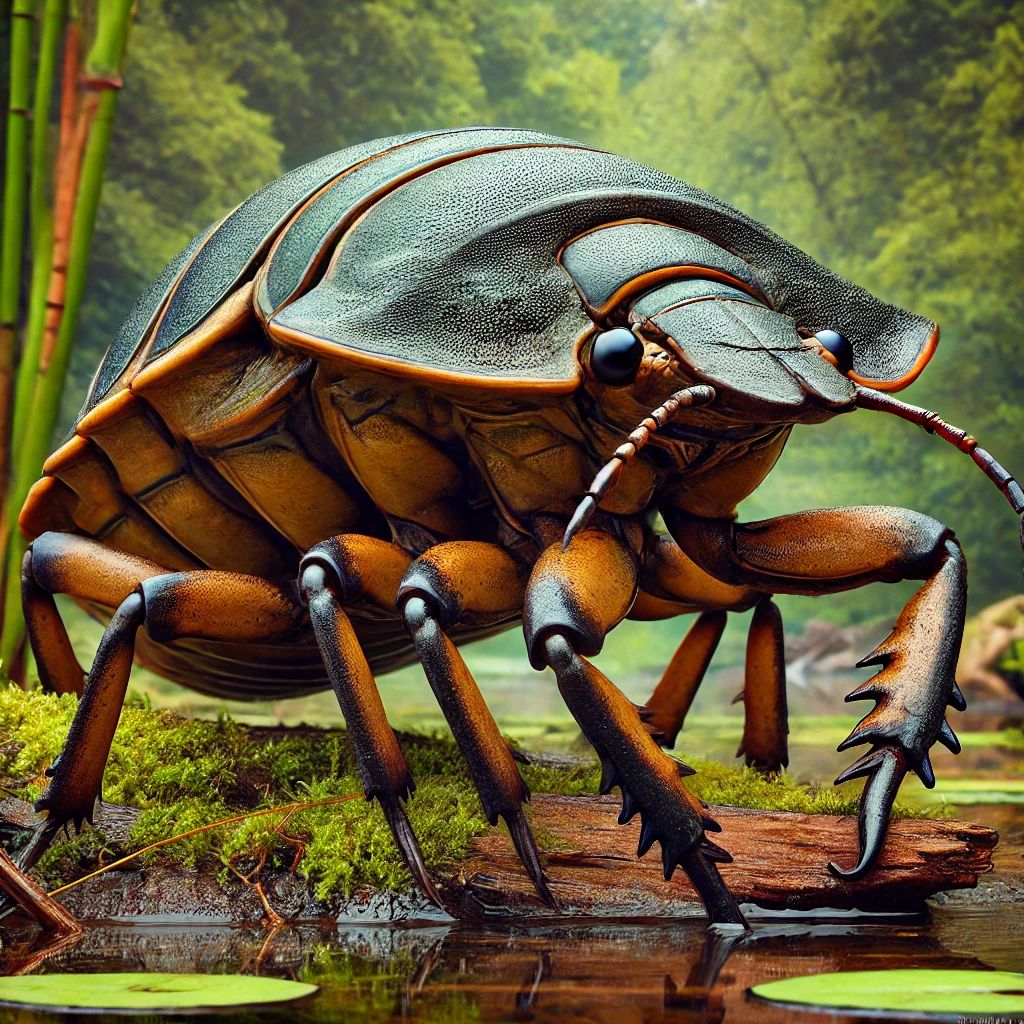Scientific Classification:
- Kingdom: Animalia
- Phylum: Arthropoda
- Class: Insecta
- Order: Hemiptera
- Family: Belostomatidae
- Genus: Megalethocerus
- Species: Megalethocerus torontensis
Description:
The Giant Toronto Waterbug, scientifically named Megalethocerus torontensis, is an impressive insect resembling the giant waterbug (Lethocerus americanus), but significantly larger, reaching the size of a medium-sized dog. These formidable insects primarily inhabit areas near fresh or saltwater bodies in the Toronto System.
Habitat and Distribution:
Giant Toronto Waterbugs are predominantly found near aquatic environments, both freshwater and saltwater, where they thrive and hunt.
Physical Characteristics:
- Size: Comparable to a medium-sized dog.
- Appearance: They have a robust, flattened body typical of waterbugs, with powerful legs adapted for swimming.
- Coloration: Their coloration ranges from dark brown to olive green, providing camouflage in aquatic environments.
Behavior and Ecology:
- Swimming Ability: These waterbugs are exceptional swimmers, capable of covering great distances underwater.
- Breathing: They can breathe underwater, utilizing specialized structures that extract oxygen from water.
- Reproduction: The male fertilizes the eggs laid by the female. Eggs hatch in approximately two weeks, and the average lifespan of an individual is around three years.
Edibility:
Giant Toronto Waterbugs are edible and are often hunted by local fishermen for their unique taste. The flesh has a slightly fishy flavor, with a firm texture reminiscent of shrimp. They can be prepared in various ways, including boiling, broiling, or grilling.
Culinary Uses:
Due to their unique taste and texture, these insects have become a delicacy in the region, featured in various traditional and contemporary dishes. They are particularly popular in grilled and broiled forms, often served with a variety of sauces and seasonings.
Conservation Status:
Currently, the population of Giant Toronto Waterbugs is stable, but continuous monitoring is essential to ensure sustainable harvesting practices and prevent overexploitation.

